Ika Krishnayanti vividly remembers the last time massive, deadly forest fires swept through Indonesia.
Linked to more than 100,000 premature deaths across the country – as well as in neighbouring Malaysia and Singapore – due to the haze that engulfed the region, the massive fires of 2015 left a trail of devastation that lingered long after.
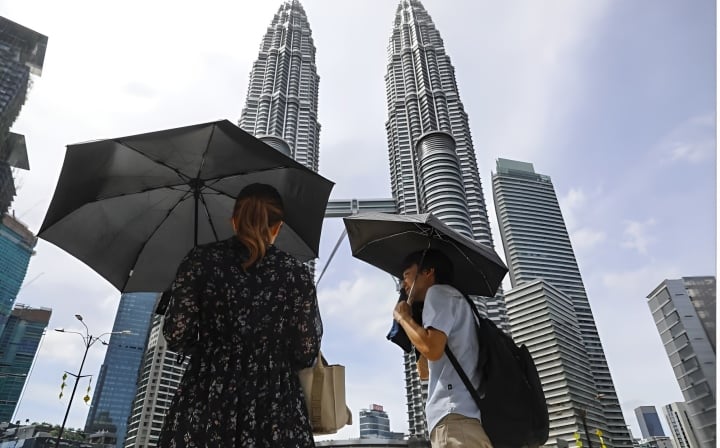
A couple holds an umbrella to avoid the sun in Kuala Lumpur last month. (Photo: EPA-EFE)
They have gone into “rage” after the El Nino climate pattern lengthened Indonesia’s dry season and shifted seasonal rains, with El Nino’s impacts set to worsen as the world warms and the climate changes.
“The fires have caused huge damage to Indonesia and its farmers,” said Krishnayanti, a farmer and international relations officer for the Indonesian Farmers Association. “This year, if El Nino comes, Indonesia needs to be seriously prepared because that damage could happen again.”
Over the past three years, a weather phenomenon known as La Nina has been slightly cooling global temperatures. But climate scientists are predicting a return of El Nino in 2023, bringing with it extremes like heat, drought, and fire risk.
Now, meteorologists are warning of record-breaking temperatures across Asia this year, as the region swelters in extreme heatwaves and faces a grim future.
Temperatures reached a scorching 50 degrees Celsius in parts of Thailand last month. In India, at least 13 people died of heatstroke and dozens were hospitalized when thermometers hit 45 degrees at an outdoor awards ceremony in mid-April. And in China, nearly a year into a severe heat wave and drought in 2022, more than 100 weather stations recorded record high temperatures last month.

The April heat makes people in Yangon, Myanmar uncomfortable. (Photo: Xinhua)
Hottest April in Asia
Globally, the past eight years have been the hottest on record. Extreme weather events are becoming more common, with experts warning that the frequency and intensity of heatwaves will only increase as climate change continues to wreak havoc.
Last month was “the hottest April in Asia,” said Dr Wang Jingyu at the National Instituteof Education in Singapore, who studies climate modelling and land-atmosphere interactions.
He attributed the intense heat to the return of the El Nino phenomenon, with its effects: reduced rainfall and increased temperatures.
The United Nations World Meteorological Organization on May 3 predicted an 80% chance that the climate pattern would appear in October this year, adding that there was a 60% chance it could develop as soon as July.
Meanwhile, an 11-year-old boy in Malaysia died of heatstroke and dehydration last month as thermometers soared to 40 degrees Celsius. Luang Prabang in Laos hit a record high of 42.7 degrees Celsius and temperatures climbed to around 45 degrees Celsius in Myanmar.
In Bangladesh, there have been reports of roads melting under the scorching sun in the capital Dhaka. In India, state governments have closed schools and ministers have urged children to stay home to avoid headaches and fatigue caused by the high temperatures.
A heat wave of such intensity cannot be caused by El Nino alone, according to Benjamin Horton, director of the Earth Observatory of Singapore at Nanyang Technological University.

A man washes his face with water to cool off in Dhaka, Bangladesh. (Photo: EPA-EFE)
“Something else is happening too. The Earth is getting warmer, with significantly more moisture in the atmosphere,” he said, noting that naturally fluctuating climate cycles are not the only cause of recent record-breaking extreme weather events.
Human activities, including burning fossil fuels, deforestation and other land-use changes, have contributed to the climate crisis by releasing increasing amounts of greenhouse gases into the atmosphere, trapping heat and warming the planet.
Global greenhouse gas emissions continued to rise last year – despite warnings from the United Nations that they must peak by 2025 to avoid disaster – and temperatures were at least 1.1C higher than pre-industrial times.
Record heat has disrupted crop production, caused social hardship and led to record levels of energy consumption, Mr Horton said.
Urgently prepare action plan
According to the World Meteorological Organization, nearly 26,000 people have died in heat waves across India between 1992 and 2020. Recent years have seen an increase in the frequency, duration and intensity of heat waves, which typically hit the country between March and July.
This year, India's weather department predicts above-average temperatures and heat waves to last until the end of May, with the possibility of further heatwaves due to El Nino.
Many people, including officials, still lack knowledge about how best to act in extreme heat, while data on heat-related mortality remains scant, according to Dileep Mavalankar, director of the Gujarat-based Indian Institute of Public Health.
“If El Nino disrupts India’s monsoon season, it will have a major impact on agriculture and farming, and as a result the entire economy will suffer,” said Mr. Mavalankar.
He thinks the country's Ministry of Health and disaster management agency have not yet taken into account the possible impacts on people if the heat wave worsens later this year.
Mr Mavalankar – who created India's first heat action plan for a city after discovering that 800 people died in Ahmedabad after a particularly hot week in 2010 – said public education was paramount.
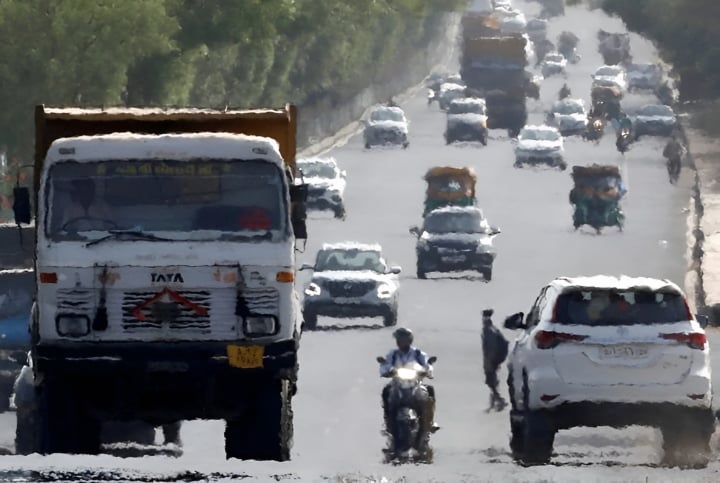
Vehicles move through thermal smog on a road in Ahmedabad, India. (Photo: Reuters)
His plan for Ahmedabad involved simple solutions like educating people on what to do in the event of high temperatures and preparing the health system to deal with heat emergencies, and resulted in a 30% to 40% reduction in total deaths during peak heat waves.
Efforts have been made to roll out heat action plans to other cities across India, but more pressing concerns like persistently high inflation and food insecurity often take precedence instead. And that could spell disaster for the country of more than 1.4 billion people.
Lack of water
Concerns about water shortages in the coming months have spread across the region, as high temperatures increase the likelihood of dry weather and drought.
In the Philippines, government agencies have stressed the importance of preventing a potential El Nino-induced water crisis to avoid a repeat of 2019, when about 10,000 households in Metro Manila were left without water as water levels in the capital's main reservoirs dried up.
The National Water Resources Board has responded with contingency plans to increase production and reactivate deep wells.
Last month, Thailand issued a warning urging people to conserve water. Malaysia’s National Water Resources Office is also preparing for a drought to hit the states of Kedah, Kelantan and Perlis, bringing with it prolonged hot and dry conditions.
The Royal Malaysian Air Force has been working with the country's meteorological department to seed clouds over Penang to replenish water supplies to dry dams.

Children play in an inflatable water pool on the street during a heatwave in Manila last month. (Photo: Reuters)
Fireproof
The extreme heat being felt in parts of Indonesia is not yet classified as a heat wave, according to Dwikorita Karnawati, head of Indonesia's meteorological agency. He added that daily maximum temperatures had begun to drop in late April.
The government in February also encouraged farmers and plantation companies to take precautions against fires in Sumatra and Kalimantan ahead of the El Nino event.
Ms Krishnayanti of the Indonesian Farmers Association said her biggest fear was that the irresponsible actions of a few could have dire consequences for everyone.
“The impact of El Nino can be made worse by irresponsible companies or careless slash-and-burn farmers. Farmers must be alert to survive in difficult times like these,” she said.
She said slash-and-burn farming practices to clear land for farming would be banned in this year's drier weather conditions.
(Source: Tin Tuc Newspaper)
Useful
Emotion
Creative
Unique
Wrath
Source




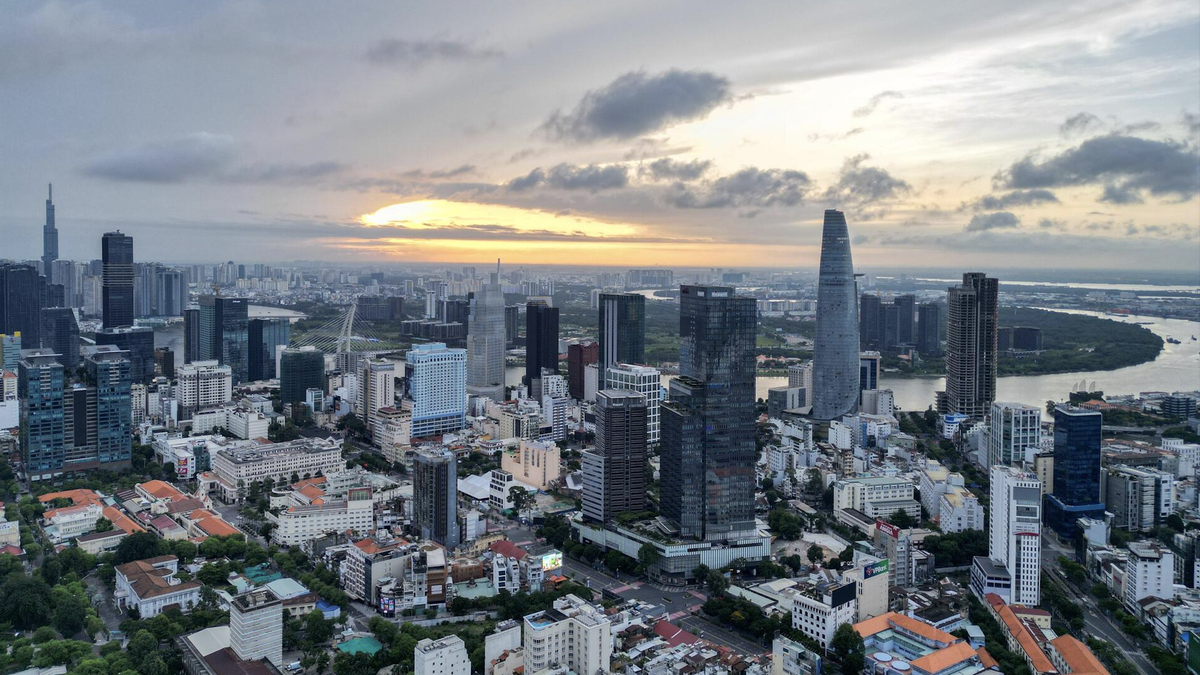

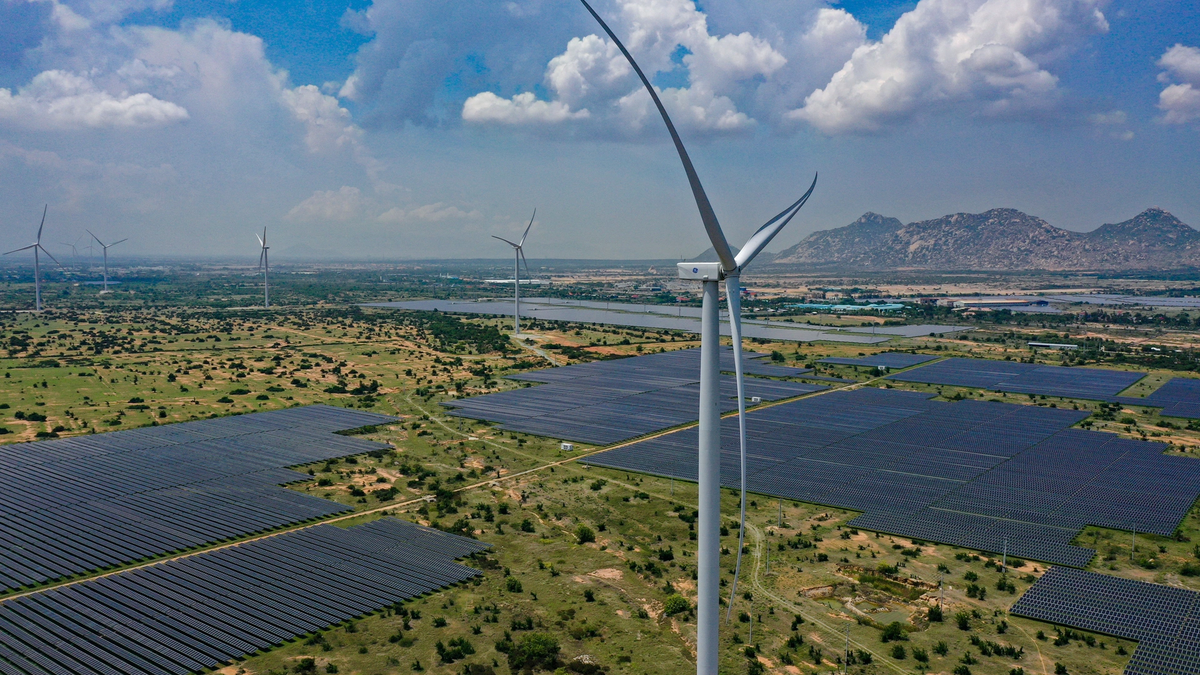



























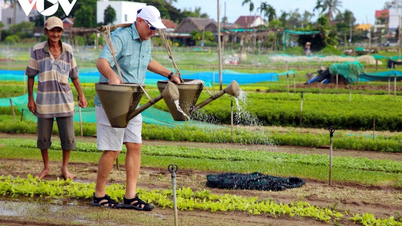
































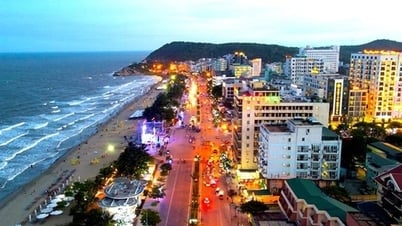









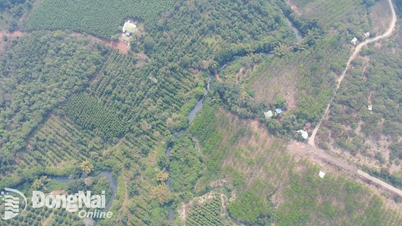




















Comment (0)